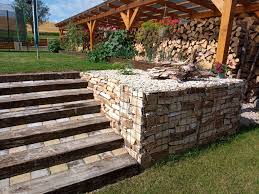Gabion design is a flexible and efficient solution for a variety of applications both in urban and rural areas. Gabions are wire mesh containers filled with stones, utilized primarily to control erosion walls, retaining walls, and decorative aspects. Here’s a comprehensive look at what you need to know concerning gabions (gabiony) designs for various settings.
1. Understanding Gabion Structures:
Gabions comprise of sturdy wire mesh cages that are filled with stones or other elements. The mesh typically comes in different forms, including circular or rectangular shapes. Gabions are well-known for their flexibility, permeability and stability, which makes them suitable for a range of applications.
2. Design Considerations for Urban Areas:
In urban environments, gabions serve multiple purposes such as the control of erosion along rivers, sound barriers and as a decorative feature in landscaping. When designing gabions for urban areas, consider the following aspects:
The aesthetic integration of urban designs typically require gabions to blend seamlessly with the architecture. Choose stones and mesh colors that match your urban landscaping.
Capacity for Load-Bearing: Make sure that the gabion structures are designed to withstand additional loads like the pressure of vehicles or pedestrians for construction projects.
Durability and Maintenance urban settings are often harsh with pollutants and heavy use affecting the structure. Opt for high-quality, rust-resistant materials and plan regular maintenance.
3. Design Considerations for Rural Areas:
In rural areas, gabions are primarily used for practical reasons, such as preventing erosion of soils as well as stabilizing slopes. The most important considerations are:
Site Situation: Rural areas usually have a variety of terrain. Gabions designed for design can be adapted to various soil types and slopes to efficiently manage runoff water and prevent erosion.
Cost-Effectiveness: Rural projects could be limited by budget. Gabions provide a cost-effective solution due to the use of locally sourced stones and their relatively simple construction.
Environmental Impact: Make sure that gabion designs don’t adversely affect wildlife in the local area or ecosystems. Incorporate natural vegetation in the area around gabion structures to blend with the landscape of rural areas and encourage habitat preservation.
4. Construction and Installation:
No matter where, correct installation is essential. Gabions must be securely anchored and filled with water to ensure stability. A proper drainage system must be thought of to prevent water buildup within the gabion. This could cause structural damage.
In short, the design of gabion structures for both rural and urban areas must be considered with care aesthetics, load-bearing requirements the cost of construction, durability and environmental impact. In addressing these issues they can fulfill their purpose as well as complement their surroundings.


